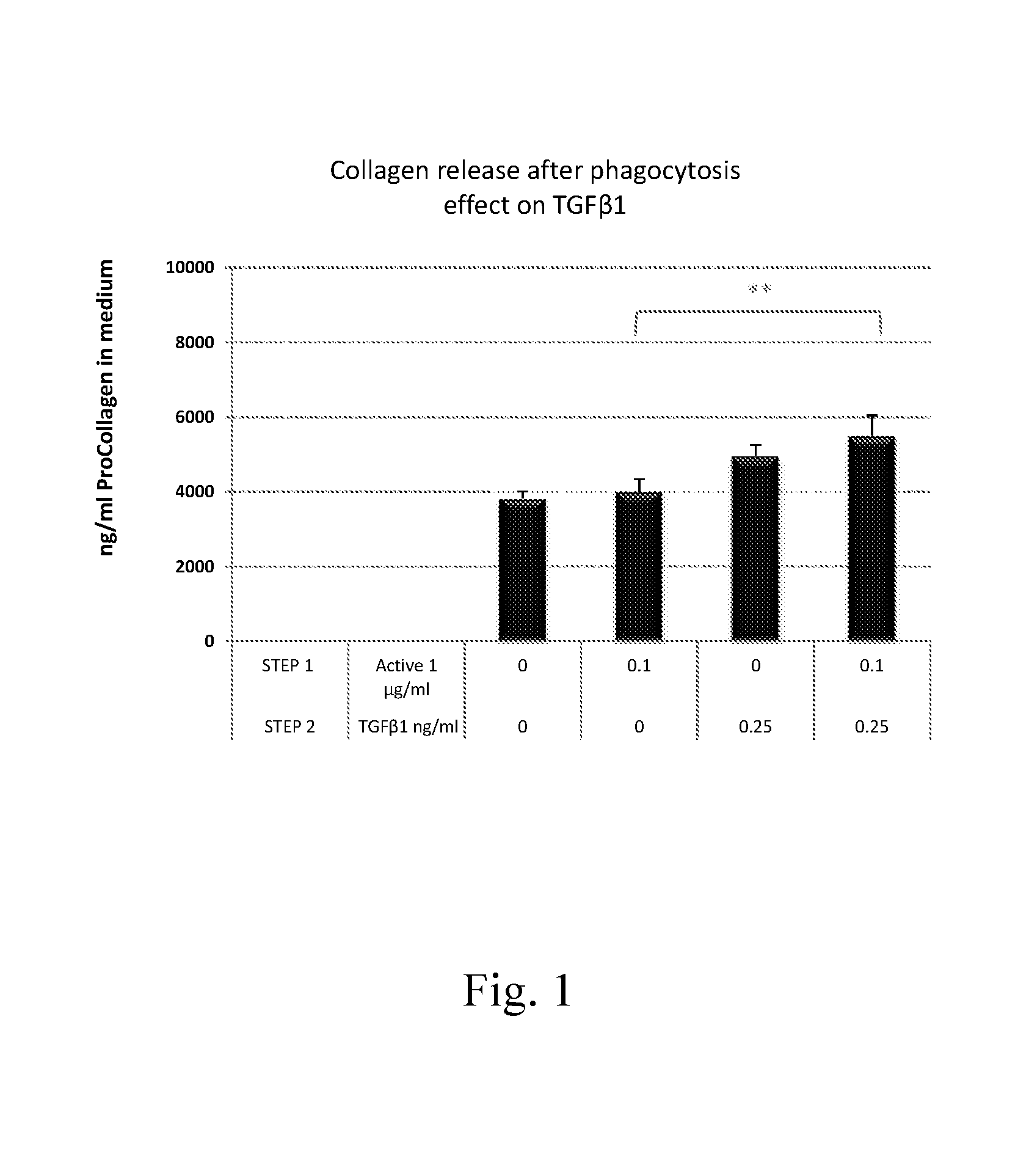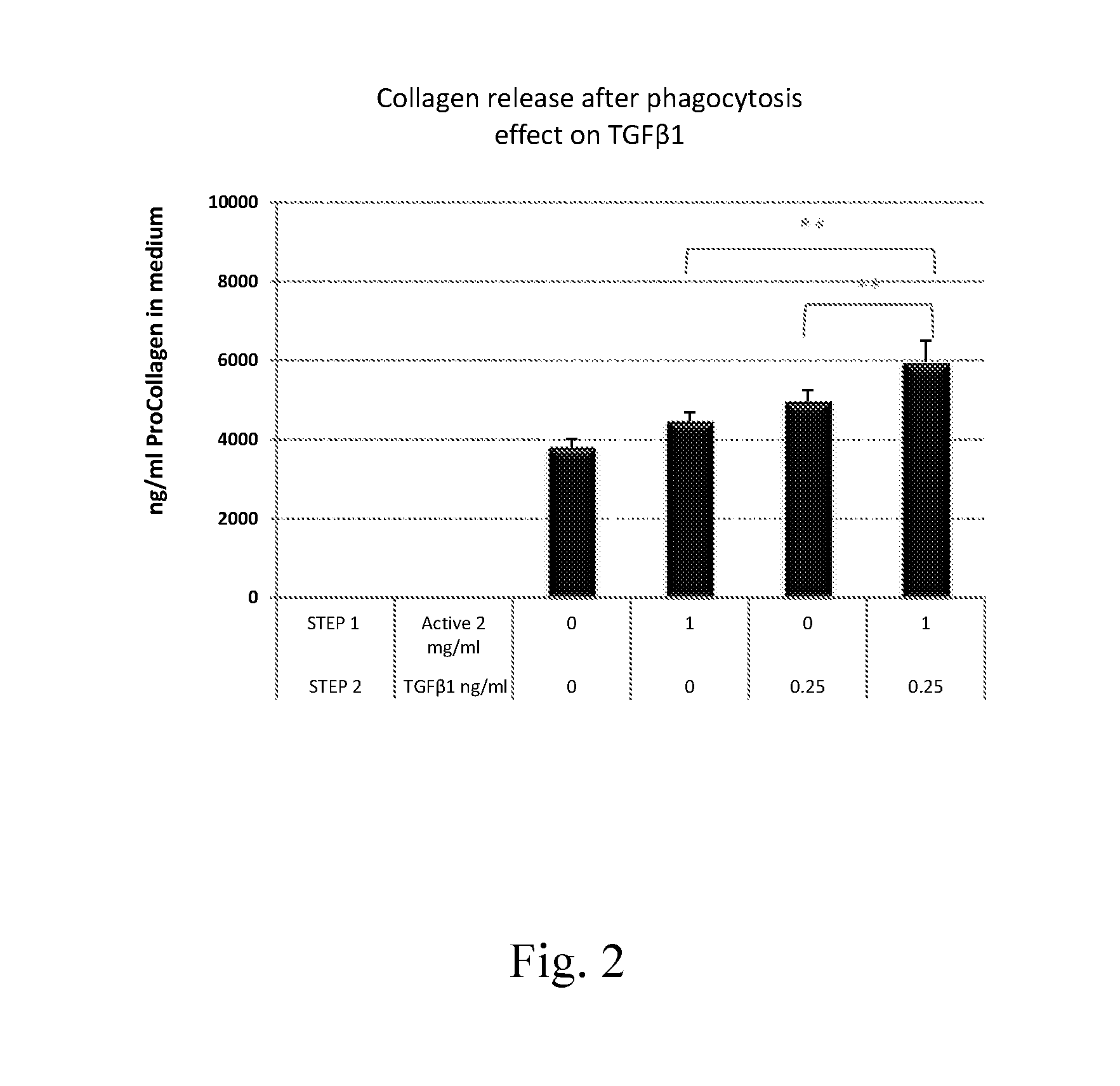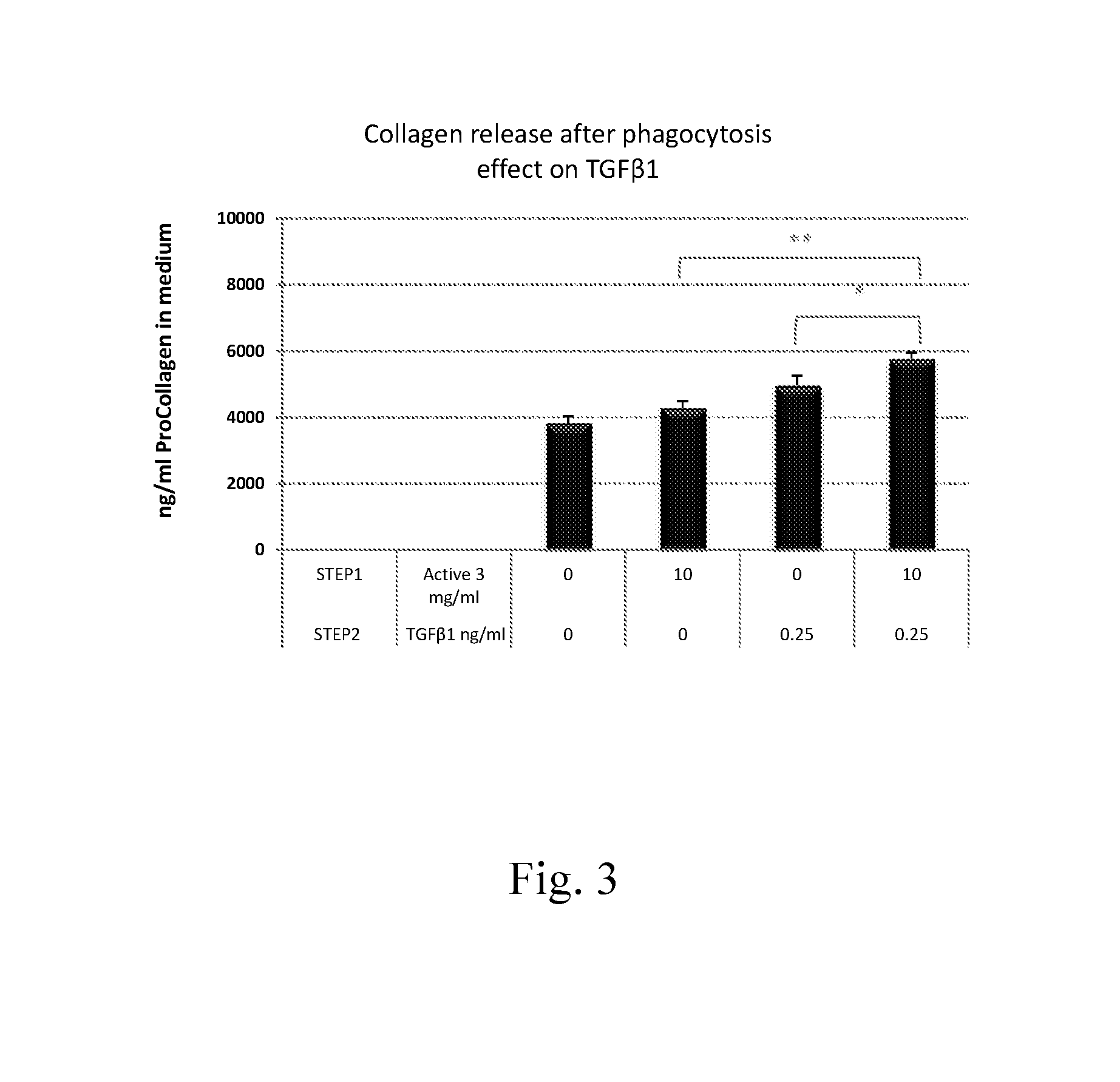Novel Skin Remodeling Strategy
- Summary
- Abstract
- Description
- Claims
- Application Information
AI Technical Summary
Benefits of technology
Problems solved by technology
Method used
Image
Examples
example 1
Measurement of TGFβ1-Induced Collagen Synthesis in HDF After Pretreatment with Inducers of Collagen Phagocytosis
Procedure:
[0090]1. On day 1, HDFs were plated in 96 well plates.[0091]2. On day 2, HDFs, after reaching confluence, were treated with medium (control) or with actives (test materials previously found by the inventors to be phagocytosis enhancers*; data not shown) under starvation conditions for 48 hours (step 1).[0092]3. On day 4, the actives were removed and the cells were treated with medium or with a collagen inducer, 0.25 ng / ml TGFβ1 in medium, for 72 hours (step 2).[0093]4. On day 7, medium was collected and analyzed for collagen release using a PIP EIA. The amount of PIP (pro-collagen ng / ml medium) is quantitated by measuring the absorbance using an EIA plate reader. Accurate sample concentrations of PIP can be determined by comparing the specific absorbances to a standard curve. Cell viability also was assessed using a standard 3-(4,5-dimethylthiazol-2-yl)-2,5-diphe...
example 2
Measurement of NXP75-Induced Collagen Synthesis in HDF After Pretreatment with Inducers of Collagen Phagocytosis
Procedure:
[0107]1. On day 1, HDFs were plated in 96 well plates.[0108]2. On day 2, HDFs, after reaching confluence, were treated with medium (control) or with actives under starvation conditions for 48 hours (step 1). Actives were test materials previously found by the inventors to be phagocytosis enhancers; data not shown (see Example 1 above for General Protocol for Measuring Efficacy of Active to Boost Phagocytosis).[0109]3. On day 4, the actives were removed and the cells were treated with medium or with a collagen inducer, 20 μg / ml NXP75 in medium, for 72 hours (step 2).[0110]4. On day 7, medium was collected and analyzed for collagen release using a PIP EIA, as described in Example 1, hereinabove.
Results:
[0111]For all results shown in the graphs, the following calculation was employed to ascertain the percent increase in collagen, measured as procollagen (Pro-Col), p...
example 3
Measurement of NXP75-Induced Collagen Synthesis in HDF After Pretreatment with Inducers of Collagen Phagocytosis
Procedure:
[0114]1. On day 1, HDFs were plated in 96 well plates.[0115]2. On day 2, HDFs, after reaching confluence, were treated with medium (control) or with actives under starvation conditions for 48 hours (step 1). Actives were test materials previously found by the inventors to be phagocytosis enhancers; data not shown (see Example 1 above for General Protocol for Measuring Efficacy of Active to Boost Phagocytosis).[0116]3. On day 4, the actives were removed and the cells were treated with medium or with a collagen inducer, 20 μg / ml NXP75 in medium, for 72 hours (step 2).[0117]4. On day 7, medium was collected and analyzed for collagen release using a PIP EIA, as described in Example 1, hereinabove.
Results:
[0118]For all results shown in the graphs, the following calculation was employed to ascertain the percent increase in collagen, measured as procollagen (Pro-Col), p...
PUM
| Property | Measurement | Unit |
|---|---|---|
| Time | aaaaa | aaaaa |
| Time | aaaaa | aaaaa |
Abstract
Description
Claims
Application Information
 Login to View More
Login to View More - R&D
- Intellectual Property
- Life Sciences
- Materials
- Tech Scout
- Unparalleled Data Quality
- Higher Quality Content
- 60% Fewer Hallucinations
Browse by: Latest US Patents, China's latest patents, Technical Efficacy Thesaurus, Application Domain, Technology Topic, Popular Technical Reports.
© 2025 PatSnap. All rights reserved.Legal|Privacy policy|Modern Slavery Act Transparency Statement|Sitemap|About US| Contact US: help@patsnap.com



